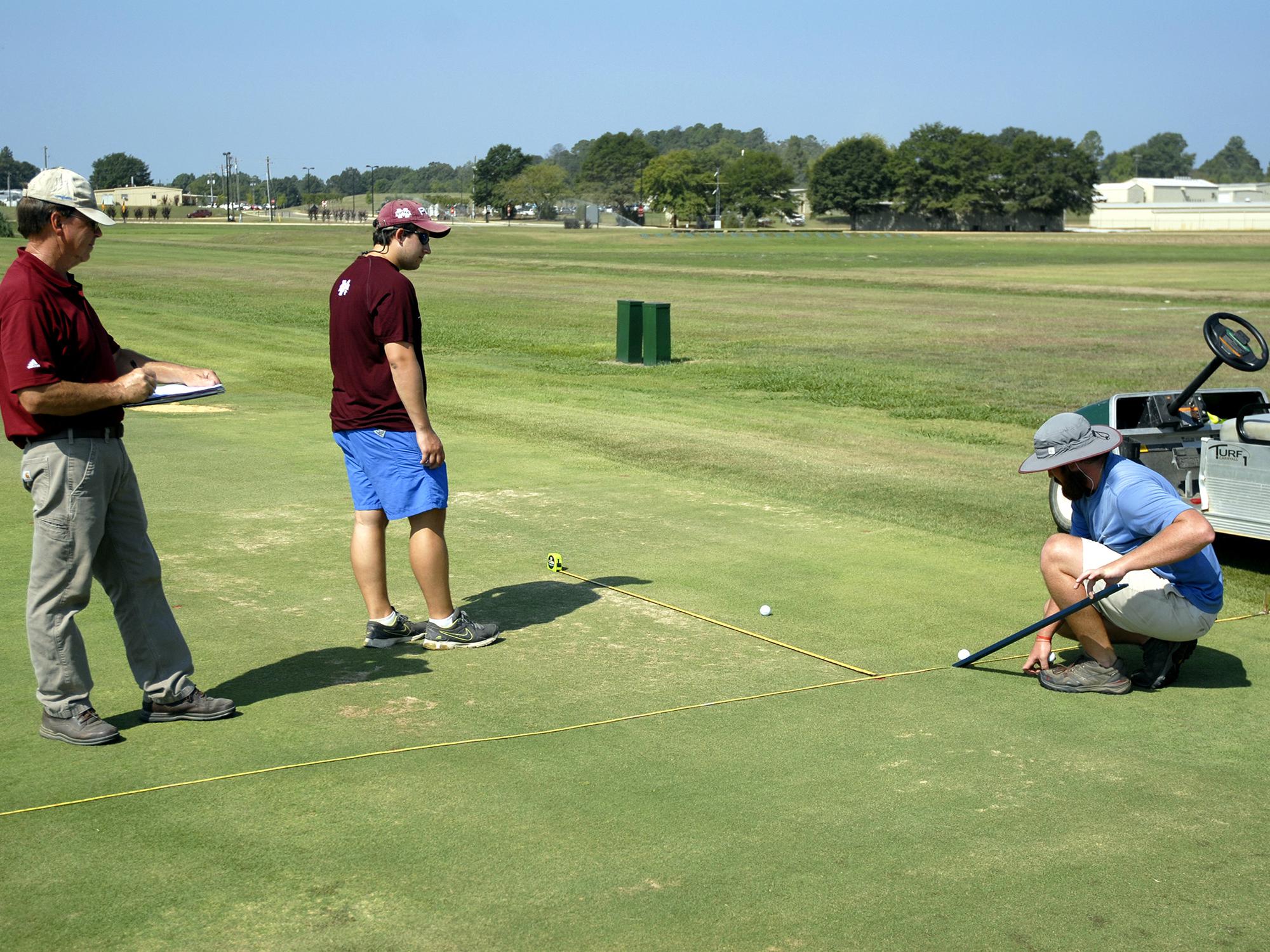Information Possibly Outdated
The information presented on this page was originally released on September 4, 2015. It may not be outdated, but please search our site for more current information. If you plan to quote or reference this information in a publication, please check with the Extension specialist or author before proceeding.
Turfgrass production shows improvement
STARKVILLE, Miss. -- Sod supply in Mississippi is slowly rebounding in 2015 after a major shortage of the commodity last year.
Jay McCurdy, turfgrass specialist with the Mississippi State University Extension Service, said turfgrass remains in short supply this year due to a decline in acreage and recent harsh winters.
“In the last three years, we’ve seen a steady trend of newly planted sod acreage,” McCurdy said, “but most farmers are much more wary about growing too fast too soon after the rough-and-tumble years past. Farmers are optimistic that the demand for turf is growing, specifically specialty or niche varieties. Newly developed varieties tout benefits such as reduced fertilizer and irrigation requirements.”
One reason for optimism is the improving housing market. A recent study from the U.S. Census Bureau indicated housing starts across the country in July reached their highest rates in nearly eight years. The 0.2 percent increase -- an annual rate of 1.21 million houses -- includes a 12.8 percent month-over-month improvement.
McCurdy said improvement is driving demand, but the landscape industry still is not up to full steam.
“We’re experiencing skilled and unskilled labor shortages across the turf and landscape industry, which is driving prices upward for both production and installation,” he said. “There are arguably fewer turf-installing landscapers now than there were 10 years ago. Commercial construction, specifically federal and state infrastructure projects funded within the last decade, seem to be coming to fruition, which culminates with landscape installation. I hope this continues, but it may only be a temporary spike.”
A range of issues affect Mississippi turf producers, weather and labor being the most important. Like their counterparts in forage and crop production, turfgrass producers rely heavily on cooperative weather in order both to grow their product and to be able to operate machinery in the field.
“There are sod farms that have been too wet, and some too dry,” McCurdy said. “That’s nothing new.”
Skilled and unskilled labor is also in short supply for the industry.
“Without affordable labor or capital for mechanization of the harvesting process, we’re really in a tight squeeze to meet the sporadic nature of demand for our fresh produce,” McCurdy said.
There are no recent studies of Mississippi’s turf production industry, but McCurdy estimates there are 45 sod farms within the state. Prices for common sod varieties including Tifway 419 bermudagrass and “common” centipedegrass have held in the range of $1.50-$2 per square yard. Other species, such as zoysiagrass and St. Augustine grass, are typically around $3 per square yard.
Bennie Keith, executive secretary for the Mississippi Crop Improvement Association, said bermudagrass and zoysiagrass have responded well to favorable growing conditions this year, and developing treatments in the industry have helped cut down on turf diseases.
“We haven’t seen high insect pressure,” Keith said. “Armyworms were a big problem for us last year, but this year they haven’t been much of an issue.”
Barry Stewart, associate professor of turf with Extension and the Mississippi Agricultural and Forestry Experiment Station, said the longer weather stays warm, the more growers will be able to produce late into the fall.
“We need more rain. We’ve been dry, and timely rains mean producers aren’t having to pay as much to run their water pumps,” Stewart said. “It looks like we’re going to have good growing conditions going into the fall if we remain warm. We had a cool snap in late August that would have slowed us down, but temperatures have picked back up, and now it looks like we’re ready to press on and grow some more grass.”






